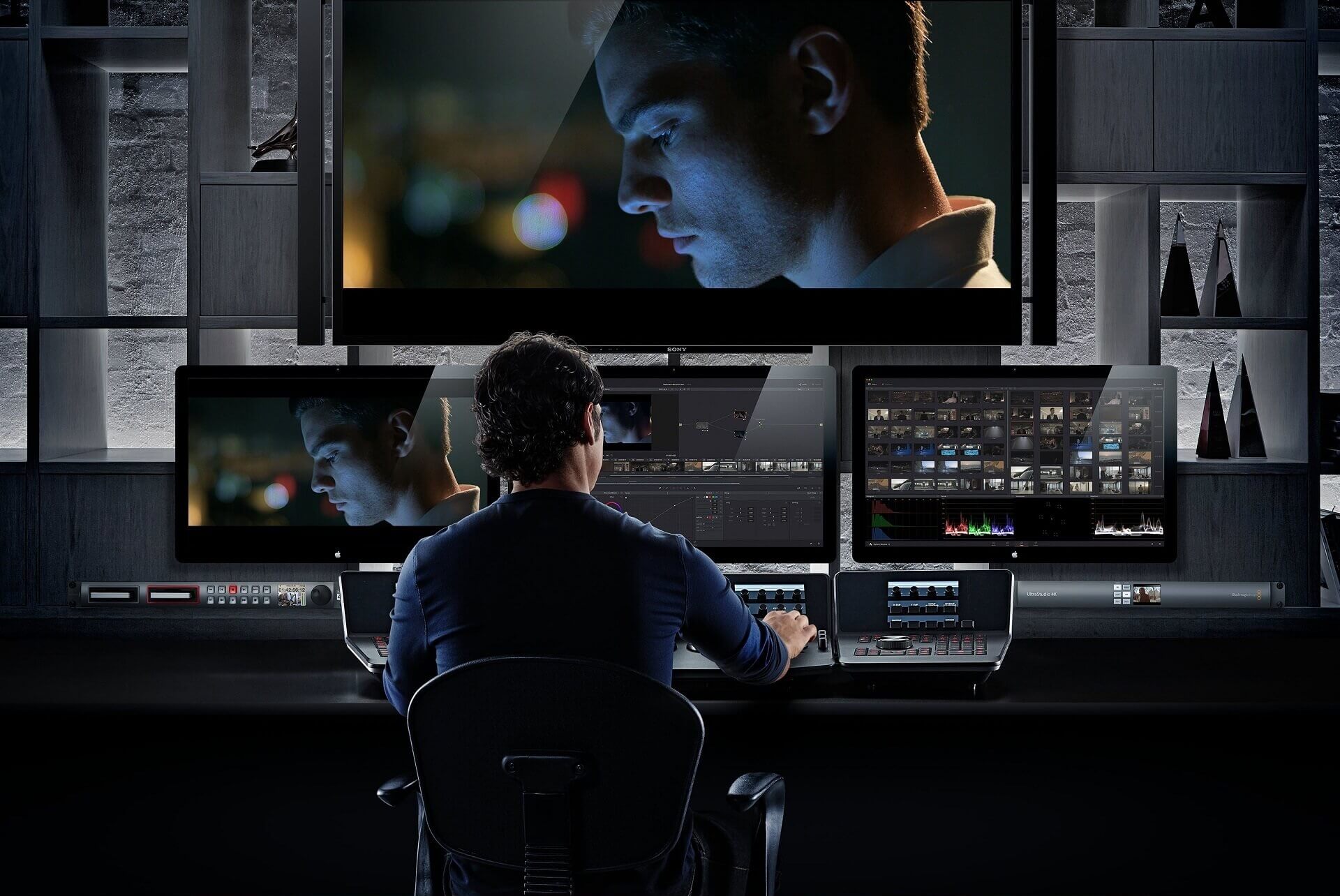With advancements in digital technology in filmmaking, filmmakers have more control over color than ever. Hues, tones, and palettes can be changed to create a stylized look that tells a story. The role responsible for creating a visual color scheme to tell a story is the Colorist. Directors and cinematographers are praised for their use of color in filmmaking. However, the Colorist is the unsung hero who often brings these visions together. What is a Colorist? In this article, we’ll take a look at the role of a film Colorist, what they do, and what you need to do to start a career as one.
What is a colorist?
Let's start with a Colorist definition
What does Colorist mean? You might think they simply choose the colors of a film. However, there is more to the role than simply adjusting hues and saturation. They must understand the psychological power of color and use that to tell a story. Let’s dive a bit deeper into the Colorist meaning by looking at the Colorist definition.
COLORIST DEFINITION
What is a Colorist?
A Colorist is responsible for designing the color scheme of a film in order to achieve a specific mood or visual style. Colorists work closely with a film’s director and director of photography to determine what color palette will best serve the story.
Colorists are involved in the very final phases of post-production. After a film’s edit is locked, the final cut is sent to the Colorist. Colorists use coloring software to manipulate the chroma (color) and luminescence (brightness) of footage in order to create the specific look and palette the director and DP have decided on.
What is a colorist responsible for?
- Communicating with director and cinematographer
- Movie color grading
- Color correction
Film colorist responsibilities
What does a Colorist do?
First and foremost, Colorists are responsible for collaborating with a film’s director and director of photography to decide on a color scheme that will best fit the film’s mood. Many auteur directors are very specific about their use of color in story.
Most famously, Stanley Kubrick’s use of color throughout his filmography contributed to the mood of his films. Just take a look at how meticulous Kubrick was when using color throughout his filmography.
Stanley Kubrick Movie Color Grading • Subscribe on YouTube
So, what is a Colorist responsible for to achieve these specific color palettes? Once a film Colorist, director, and director of photography are all on the same page about the color scheme of a film, a Colorist is primarily responsible for both color grading and color correction.
It is common to get color grading and color correction mixed up. To better understand the differences between color grading vs color correction processes, take a look at this quick video explanation below.
Film Color Grading vs. Color Correction
Color Correction
Color correction is the technical process of normalizing any color errors or inconsistencies in your footage. This is important to do prior to color grading so that there is a consistent starting point among all of the footage. Color correction can be used to match footage from different cameras, lighting setups, locations, or light sources.
Color Grading
Color grading is the process of manipulation chroma and luminescence to give the footage the style and palette you desire. Some Colorists utilize LUTs for convenient and speedy film color grading. However, most professional projects will involve color grading footage by hand to ensure consistency.
Although these are the primary responsibilities, secondary responsibilities can vary job to job. Colorists working on commercials may consult with creative directors. Those working on feature films may consult with a script supervisor or production designer.
Related Posts
Colorist training
How to be a Colorist
Before we dive into resources, networking and job opportunities, let’s talk a bit about how to be a Colorist. Training involves a few different components. Becoming a film Colorist, like any role in filmmaking, will require both creative and technical knowledge.
Color Theory
To really understand why this position is so important in filmmaking, you need to understand the impact of color on an audience. And to understand this, you need to learn everything there is to know about color theory.
Color theory explores the psychological effects color can have on an individual. For a breakdown of color theory in film, check out our video analysis below.
Color Theory in Film • Subscribe on YouTube
Software
What is a Colorist responsible for knowing when it comes to software? The duties require comprehensive understanding of film color grading software like Baselight and Davinci Studio. Understanding how to use these tools to achieve any visual style and palette your director or cinematographer wants is essential. Here are 3 basic rules every beginner should know about utilizing softwares like DaVinci Resolve to color grade.
3 Rules Every Colorist Should Know • DaVinci Resolve
Equipment
As you can see from the video above, professionals don’t use a laptop to color grade anything. You’ll need monitors (often 4K) that are designed for film color grading and color accuracy. You’ll also want to utilize or at least familiarize yourself with color panels.

How to be a colorist for film • Professional setup
Communication
Last, but not least, you’ll need to have great communication skills for collaborating with directors and cinematographers. You alone will not decide the ultimate color scheme of a film. Being able to communicate effectively with a director will make you a better colorist that produces great results.
Digital colorist salary
Colorist salary
Before you get started, you might be wondering what is a colorist salary? According to Glassdoor, the average colorist salary is about $42,000 per year. Keep in mind that the role of a colorist varies. You may be working freelance colorist jobs gig to gig or a salaried employee of a post-production company. Salary can vary greatly on what type of role you take on and the consistency of work opportunities.
Different colorists may also work in different niches. For example, colorist salary can differ for a Hollywood colorist working in the studio realm versus colorists who work in the commercial industry. A colorist salary can range anywhere from $30,000 - $70,000.
Related Posts
Freelance colorist jobs
Find colorist jobs
Once you’ve developed the skills we listed a few sections earlier and have gained experience in color grading softwares, you’ll need to get your foot in the door of the industry. Here are a few tips at finding colorist jobs.
Work at a post-production house
Post-production houses are studios that are dedicated specifically to post-production processes. Getting a job at an entry-level position at a post house can create opportunities for you.
It will also give you access to the typically expensive, professional color grading hardware so that you can learn the fundamentals from other professional colorists. Working your way up to or starting as an assistant colorist will increase your odds at landing a colorist position at a post house.
Develop your reel
Like all creative positions, employers will want to see samples of your work. Develop a reel so that you have something to show them. Working on smaller projects will help add to your reel so that you can show what you are capable of. Here is a comprehensive video tutorial on how to create a demo reel.
How to make a reel to land Colorist jobs • Live with Qazi
Network
Creating opportunities for yourself involves networking. Develop relationships with any directors or cinematographers you work with. More often than not, these relationships will come back around when they are seeking a colorist and you left a solid impression.
Resources
Continue to network online by utilizing resources like LinkedIn and other social media groups to find work opportunities or peers to work with in your area. Utilize online resources like ScreenSkills Trainee Finder to find opportunities to work as a post-production trainee.
Utilize sites like Glassdoor and Indeed to find job opportunities in post-production houses.
Related Posts
UP NEXT
Discover more filmmaking roles
Colorists play an essential role in the post-production phase of filmmaking. To continue through our series of the various filmmaking roles and positions, you can explore similar jobs like Editor, DIT, or Cinematographer. Or you can jump over to our Film Crew Index to browse the entire range of filmmaking roles. Understanding what everyone’s role on a film set is will help make you a better overall filmmaker and a more efficient crew member.
Up Next: Explore more crew positions →
Share your vision with elegant shot lists and storyboards.
Create robust and customizable shot lists. Upload images to make storyboards and slideshows.
